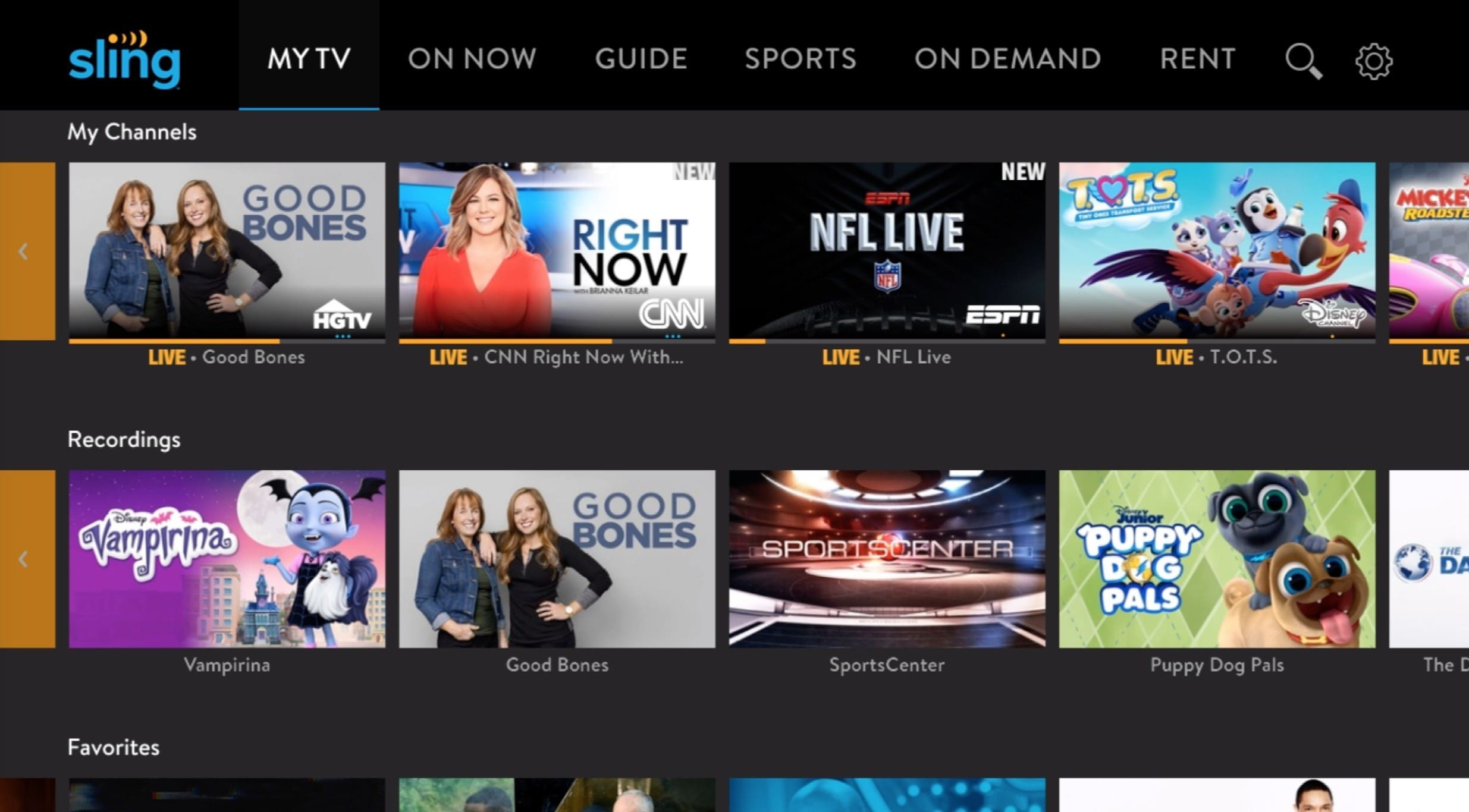Home>Technology>Home Entertainment Systems>What Is Syndication In Television


Home Entertainment Systems
What Is Syndication In Television
Modified: January 9, 2024
Learn about syndication in television and its impact on home entertainment systems. Discover how syndicated content enhances your viewing experience. Explore the benefits of syndication for home entertainment systems.
(Many of the links in this article redirect to a specific reviewed product. Your purchase of these products through affiliate links helps to generate commission for Storables.com, at no extra cost. Learn more)
Introduction
Welcome to the world of television syndication, where the magic of storytelling meets the business of entertainment. In this article, we'll delve into the fascinating realm of television syndication, exploring its definition, historical significance, types of deals, benefits, challenges, and examples of successful syndicated shows.
Television syndication plays a pivotal role in bringing diverse and captivating content to viewers across the globe. It is a dynamic and ever-evolving facet of the entertainment industry, encompassing a wide array of genres, formats, and distribution models. Whether you're a fan of classic sitcoms, gripping dramas, or thrilling reality shows, the impact of syndication on television programming is undeniable.
Join us as we embark on a journey through the captivating world of television syndication, unraveling its intricacies and uncovering the stories behind some of the most beloved and successful syndicated shows in history. Get ready to explore the dynamic landscape of syndicated television content and gain a deeper understanding of its influence on the entertainment industry.
Key Takeaways:
- Television syndication distributes shows to multiple platforms, expanding audience reach and revenue. Successful examples include “Friends” and “Jeopardy!” showcasing enduring appeal and commercial success.
- Syndication faces challenges like audience fragmentation and digital monetization, but offers benefits like revenue diversification and programming flexibility. It continues to shape diverse and captivating television programming.
Read more: What Is Television
Definition of Syndication
Television syndication refers to the process of licensing and distributing programming to multiple broadcasters or platforms for airing outside of the original network or production company. This distribution model enables content creators to reach a broader audience and generate additional revenue through licensing agreements with various television stations, cable networks, streaming services, and other media outlets.
One of the key characteristics of syndicated content is its ability to be broadcast on multiple channels or platforms, allowing viewers from different regions and demographics to access the programming. Syndicated shows are often aired during non-peak hours, such as late nights or weekends, offering audiences a diverse range of content beyond the traditional network programming schedule.
Furthermore, syndication can involve both original programming created specifically for syndicated distribution and the rerun of existing shows that have previously aired on network television. This flexibility allows content creators to capitalize on the enduring popularity of successful series while introducing new and innovative programming to the syndicated market.
From timeless sitcoms and gripping dramas to captivating reality shows and informative talk shows, syndication encompasses a wide spectrum of content genres, catering to the diverse interests of television audiences. This adaptability and variety contribute to the enduring appeal of syndicated programming, making it an integral part of the television landscape.
Television syndication serves as a conduit for delivering compelling and engaging content to viewers beyond the confines of traditional network broadcasting, fostering a dynamic ecosystem of entertainment that thrives on diversity, innovation, and audience engagement.
History of Television Syndication
The history of television syndication is intricately woven into the evolution of the medium itself, reflecting the dynamic interplay between content creators, distributors, and audiences. The concept of syndication emerged in the early days of television, as producers sought alternative avenues to maximize the reach and profitability of their programming.
During the formative years of television, the dominant model of content distribution revolved around network broadcasting, with major television networks such as ABC, CBS, and NBC wielding significant influence over programming decisions. However, as the demand for diverse and locally relevant content grew, independent producers and smaller production companies began exploring syndication as a means of reaching untapped markets and expanding their audience base.
One of the pivotal milestones in the history of television syndication was the emergence of off-network syndication in the 1950s and 1960s. This era witnessed the syndicated distribution of popular network shows, allowing local stations to air reruns of successful series during non-network hours. This shift in programming distribution not only provided audiences with a wider array of viewing options but also presented a lucrative opportunity for content creators to capitalize on the enduring appeal of their shows.
As the television landscape continued to evolve, the 1970s and 1980s marked a period of significant growth and diversification in syndicated programming. The rise of independent stations and cable networks, coupled with the increasing demand for original and diverse content, propelled syndication into a prominent position within the industry. This era saw the emergence of iconic syndicated shows across various genres, ranging from timeless sitcoms and captivating game shows to groundbreaking talk shows and action-packed dramas.
With the advent of digital technology and the proliferation of streaming platforms in the 21st century, television syndication underwent a transformative shift, expanding its reach to global audiences and embracing innovative distribution models. The democratization of content creation and distribution empowered creators to explore new avenues of syndicated programming, catering to the evolving preferences of modern viewers.
Today, television syndication continues to thrive as a dynamic and integral component of the entertainment industry, offering audiences a diverse array of programming choices while providing content creators with a platform to showcase their creativity and storytelling prowess. The rich history of television syndication stands as a testament to the enduring impact of syndicated programming on the ever-changing landscape of television.
Types of Syndication Deals
Television syndication deals encompass a diverse range of arrangements and agreements that facilitate the distribution of programming to a wide array of broadcasters and platforms. These deals play a pivotal role in shaping the landscape of syndicated content, offering content creators and distributors various avenues to reach audiences and maximize the commercial potential of their programming. Here are some common types of syndication deals:
1. Off-Network Syndication:
Off-network syndication involves the licensing of successful network television shows to local stations, cable networks, and streaming platforms for reruns. This type of syndication deal allows broadcasters to air previously-aired episodes of popular series, often during non-network hours, catering to audiences seeking diverse content options beyond the traditional network schedule.
Read more: What Is The Future Of Television?
2. First-Run Syndication:
First-run syndication deals entail the production and distribution of original programming specifically created for syndicated airing. These shows are not initially broadcast on a network and are instead produced for direct syndicated distribution, offering audiences fresh and innovative content outside the realm of traditional network programming.
3. Barter Syndication:
Barter syndication arrangements involve the exchange of advertising time between the content distributor and the broadcaster. In this type of deal, the distributor provides the programming to the broadcaster at little to no cost in exchange for the broadcaster allocating a portion of advertising slots within the syndicated show to the distributor. This mutually beneficial arrangement enables both parties to leverage the commercial potential of the syndicated content.
4. Cash Syndication:
Cash syndication deals revolve around the outright sale of programming to broadcasters or platforms for a monetary fee. Content creators or distributors receive payment for the rights to air the syndicated content, allowing broadcasters to secure programming that aligns with their audience demographics and programming objectives.
5. International Syndication:
International syndication deals involve the licensing and distribution of programming to foreign markets and broadcasters. Content creators and distributors negotiate agreements to air their shows in international territories, tapping into global audiences and expanding the reach of their programming beyond domestic borders.
These diverse types of syndication deals underscore the dynamic and multifaceted nature of content distribution in the television industry, providing a framework for content creators and distributors to explore innovative avenues of reaching audiences and maximizing the commercial potential of their programming.
Read more: What Is On Television Tonight?
Benefits of Syndication
Television syndication offers a myriad of benefits for content creators, distributors, broadcasters, and audiences alike, shaping the dynamics of the entertainment industry and enriching the viewing experience. From expanding audience reach to maximizing revenue potential, syndication plays a pivotal role in fostering creativity, diversity, and commercial viability within the television landscape. Here are some key benefits of television syndication:
1. Expanded Audience Reach:
Syndication enables content creators to reach a broader and more diverse audience by distributing programming across multiple platforms and broadcasters. This expanded reach allows shows to resonate with viewers in different regions, demographics, and viewing preferences, fostering a deeper connection with audiences beyond the confines of traditional network broadcasting.
2. Revenue Diversification:
By entering into syndication deals, content creators and distributors can diversify their revenue streams through licensing fees, advertising sales, and international distribution. This multi-faceted approach to revenue generation provides financial stability and growth opportunities while mitigating the risks associated with reliance on a single distribution channel.
3. Long-Term Commercial Viability:
Successful syndicated shows have the potential for enduring commercial viability, as they can continue to generate revenue through reruns, international syndication, and digital streaming platforms long after their initial broadcast. This longevity contributes to the sustained profitability of syndicated programming and offers a platform for timeless content to thrive in the ever-changing media landscape.
Read more: What Are The Disadvantages Of Television
4. Programming Flexibility:
For broadcasters and cable networks, syndication offers a diverse array of programming options that cater to specific audience demographics and viewing preferences. This flexibility allows broadcasters to curate their programming schedules with a mix of original content, off-network syndicated shows, and first-run syndicated programming, offering viewers a rich and varied viewing experience.
5. Innovation and Diversity:
Syndication fosters an environment of innovation and diversity in television programming, empowering content creators to explore new genres, formats, and storytelling approaches. This diversity of content enriches the television landscape, providing audiences with a wide spectrum of shows that cater to their evolving tastes and interests.
These benefits underscore the profound impact of television syndication on the creative, commercial, and experiential dimensions of the entertainment industry, shaping the way audiences engage with programming and how content creators navigate the ever-evolving media landscape.
Challenges of Syndication
While television syndication offers a host of benefits, it also presents unique challenges for content creators, distributors, broadcasters, and audiences. Navigating these challenges is essential for sustaining the commercial viability and artistic integrity of syndicated programming. Here are some of the key challenges associated with television syndication:
1. Audience Fragmentation:
The proliferation of viewing options and platforms has led to audience fragmentation, making it increasingly challenging for syndicated shows to capture and retain viewership. With audiences dispersing across various channels and digital platforms, content creators and distributors face the daunting task of engaging fragmented audiences and building sustainable viewership for syndicated programming.
Read more: What Was The Purpose Of Television
2. Content Discovery and Promotion:
Amidst the abundance of content available to viewers, the discovery and promotion of syndicated shows pose significant challenges. Content creators and distributors must devise effective marketing strategies to raise awareness and drive engagement for their syndicated programming, competing with a vast array of content vying for audience attention.
3. Monetization in the Digital Landscape:
The shift towards digital consumption presents monetization challenges for syndicated programming. Content creators and distributors must navigate the complexities of digital rights management, ad-supported streaming, and subscription-based models to effectively monetize their syndicated content in the digital ecosystem while combating issues such as piracy and unauthorized distribution.
4. Programming Quality and Differentiation:
Ensuring the quality and differentiation of syndicated programming is a persistent challenge, particularly in a landscape characterized by diverse content offerings and audience demands. Content creators and distributors must strive to produce compelling, original, and high-quality programming that stands out amidst the sea of content available to viewers across traditional and digital platforms.
5. Evolving Distribution Models:
The evolution of distribution models and viewing habits necessitates adaptability and innovation in syndication. Content creators and distributors must stay abreast of emerging distribution channels, technological advancements, and shifting viewer preferences to effectively position their syndicated programming in an ever-changing media landscape.
Addressing these challenges requires a strategic and proactive approach from industry stakeholders, fostering collaboration, innovation, and audience-centric content strategies to navigate the complexities of television syndication and ensure the continued relevance and impact of syndicated programming in the dynamic entertainment ecosystem.
Read more: What Is A CRT Television?
Examples of Successful Syndicated Shows
Television syndication has been the breeding ground for numerous iconic and enduring shows that have captivated audiences across generations, demonstrating the enduring appeal and commercial success of syndicated programming. From timeless sitcoms to groundbreaking talk shows, the syndication landscape has been home to a diverse array of successful shows that have left an indelible mark on the television industry. Here are some notable examples of successful syndicated shows:
1. “The Oprah Winfrey Show”:
Hosted by the legendary Oprah Winfrey, this groundbreaking talk show achieved unparalleled success in syndication, becoming a cultural phenomenon that resonated with audiences worldwide. Known for its compelling interviews, thought-provoking discussions, and impactful storytelling, “The Oprah Winfrey Show” set the standard for daytime television and left an enduring legacy in the realm of syndicated programming.
2. “Jeopardy!”:
This iconic quiz show, hosted by the late Alex Trebek, has been a mainstay in syndication, captivating audiences with its challenging trivia questions and engaging format. “Jeopardy!” has garnered a dedicated fan base and achieved widespread acclaim, solidifying its status as one of the most successful and enduring syndicated shows in television history.
3. “Friends”:
The beloved sitcom “Friends” achieved remarkable success in syndication, captivating audiences with its timeless humor, endearing characters, and relatable storytelling. Following its original network run, “Friends” found a new generation of fans through syndicated reruns, solidifying its status as a cultural touchstone and a testament to the enduring appeal of syndicated sitcoms.
Read more: What Is A Smart Television?
4. “Wheel of Fortune”:
This iconic game show, known for its colorful wheel and engaging gameplay, has been a staple of syndicated programming, entertaining audiences with its blend of word puzzles, competition, and charismatic hosts. “Wheel of Fortune” continues to thrive in syndication, showcasing the enduring popularity of game shows in the syndicated television landscape.
5. “Law & Order: SVU”:
The gripping police procedural “Law & Order: Special Victims Unit” has found success in syndication, captivating audiences with its compelling narratives and ensemble cast. Through syndicated reruns, “Law & Order: SVU” has continued to engage viewers, showcasing the enduring appeal of syndicated dramas in captivating audiences beyond their original network run.
These examples underscore the diverse and enduring appeal of successful syndicated shows, highlighting the profound impact of syndication on the television landscape and the enduring resonance of captivating storytelling across genres and formats.
Conclusion
Television syndication stands as a dynamic and influential force within the entertainment industry, shaping the way audiences engage with diverse programming and offering content creators and distributors a platform to showcase their creativity and storytelling prowess. From the early days of off-network syndication to the digital era of global distribution, the evolution of syndicated programming has mirrored the ever-changing landscape of television, reflecting the enduring appeal and commercial viability of captivating content.
As we journey through the rich history, diverse types of syndication deals, and the myriad benefits and challenges associated with syndicated programming, it becomes evident that syndication serves as a conduit for innovation, diversity, and audience engagement. The success of iconic syndicated shows such as “The Oprah Winfrey Show,” “Jeopardy!,” “Friends,” “Wheel of Fortune,” and “Law & Order: SVU” exemplifies the enduring impact and commercial success of syndicated programming across genres and formats.
Looking ahead, the future of television syndication holds promise and opportunity, fueled by the democratization of content creation, the proliferation of digital platforms, and the evolving preferences of modern audiences. As content creators and distributors navigate the complexities of audience fragmentation, digital monetization, and programming differentiation, the enduring appeal of syndicated programming remains a testament to the enduring power of storytelling and the ability to captivate audiences across generations.
Television syndication continues to thrive as a vibrant and essential component of the entertainment ecosystem, offering audiences a diverse array of programming choices while providing content creators with a platform to showcase their creativity and storytelling prowess. The enduring legacy of successful syndicated shows and the ongoing evolution of syndication underscore the profound impact of this distribution model on the television landscape, shaping the way audiences engage with captivating content and forging enduring connections with the stories that resonate across screens and generations.
As we embrace the ever-changing landscape of television syndication, we celebrate the creativity, diversity, and enduring resonance of syndicated programming, recognizing its pivotal role in shaping the way we experience the magic of storytelling on the small screen.
Frequently Asked Questions about What Is Syndication In Television
Was this page helpful?
At Storables.com, we guarantee accurate and reliable information. Our content, validated by Expert Board Contributors, is crafted following stringent Editorial Policies. We're committed to providing you with well-researched, expert-backed insights for all your informational needs.










0 thoughts on “What Is Syndication In Television”